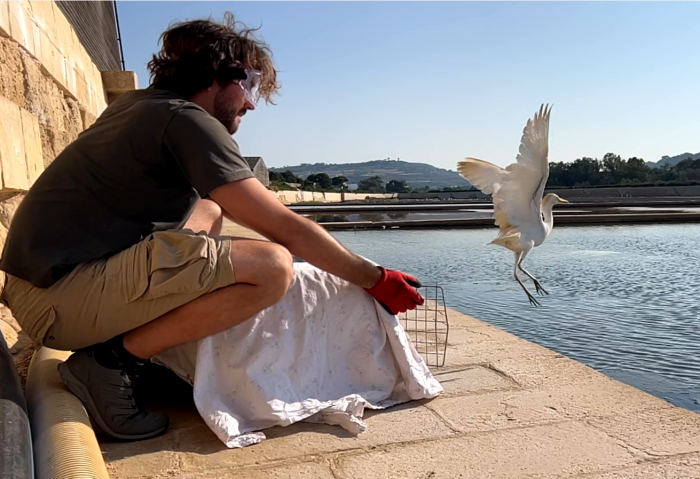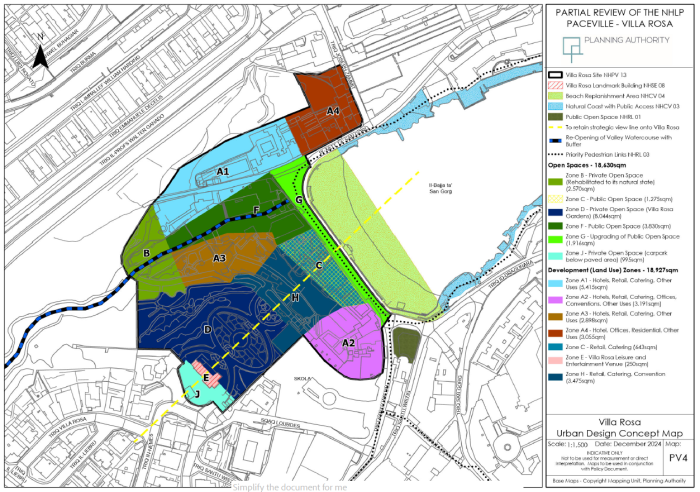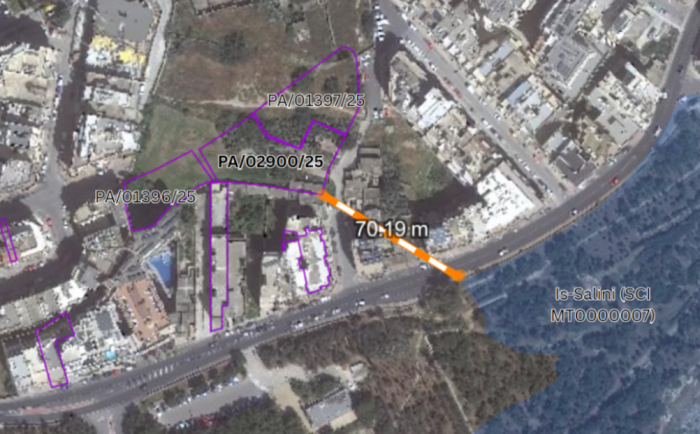On the frontlines is our monthly newsletter section covering the activities of BirdLife Malta’s conservation, policy, nature reserve (Salina, Simar, Għadira and Foresta 2000), seabird and public engagement teams, together with an update about rare and scarce bird species observed.

Giving Young Swifts a Chance
Over the past month, we’ve seen a growing number of baby Swifts arriving at our care.
The intense summer heat is forcing many chicks to leave their nests prematurely to escape dangerously high temperatures. Sadly, once on the ground, these young birds are unable to take off again — not only due to their short legs, but also because they are not yet fully developed. Once grounded, their parents are unlikely to continue caring for them.
Swifts are truly extraordinary birds. Once they fledge, they spend nearly their entire lives in flight — eating, sleeping, and even mating on the wing. Helping one reach that stage is to play a part in one of nature’s most awe-inspiring journeys.
Whenever possible, we try to reunite grounded chicks with their parents, as nothing can replace natural parental care. But when a return to the nest isn’t possible, our team steps in to hand-rear them. It’s a demanding process requiring frequent feeding throughout the day, but the reward is worth it.
The young Swifts in our care are steadily gaining strength — two of them have already been successfully released!
For more information about injured birds, visit our website and social media, or click here.
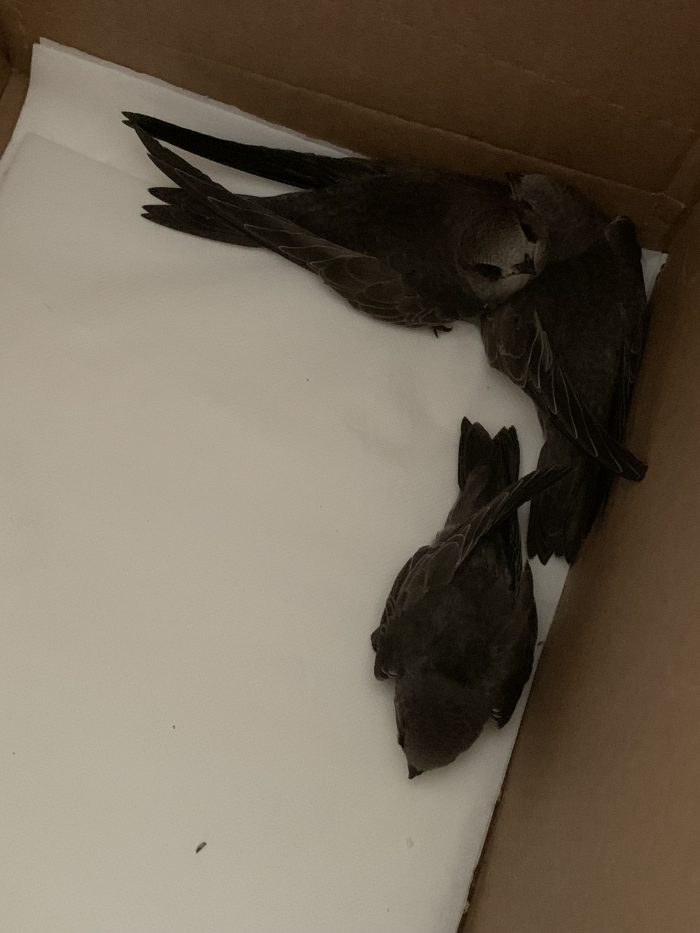
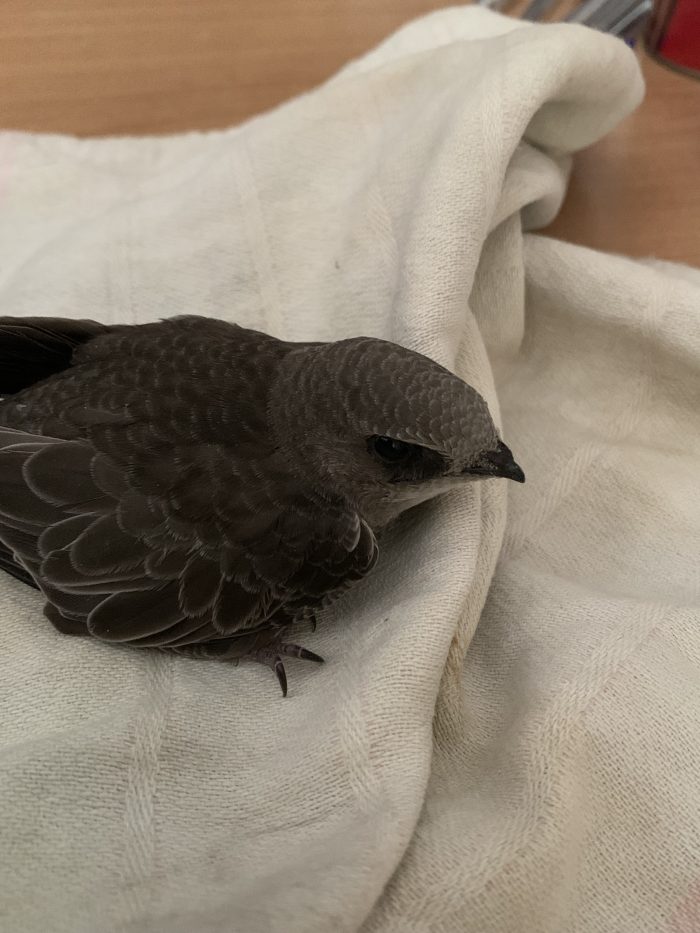
Rehabilitation and Releases
This month has been calmer than the previous ones, allowing us to prepare for the upcoming Yelkouan Shearwater season, which begins in July.
We also rescued and released several Yellow-legged Gulls, all showing signs of gastrointestinal illness.
Additionally, a Collared Dove that had collided with a window was brought in. After a few weeks of rehabilitation, the bird recovered and was ready to fly again.
A Cattle Egret’s Recovery Journey
On May 5th, we received an urgent report about a Cattle Egret stranded in a sea cave at Wied il-Għasri, Gozo. The bird had been spotted from a boat the previous day. It looked weak, unable to fly, and it was dangerously perched on a narrow ledge inside the cavern. Given the time that had passed and the bird’s fragile condition, hopes for a successful rescue were few, but we had to try regardless.
Without delay, we set off for Gozo equipped with a kayak, racing against sundown. After paddling for 20 minutes into the inlet, we were relieved to find the Cattle Egret still alive in the same spot. With light fading fast, we managed to safely net the bird.
Once back in Malta, we immediately gave it first aid and hydration. It was extremely emaciated, with a weak left leg and what appeared to be pellet wounds near its right eye. A veterinary X-ray the next morning confirmed that the Cattle Egret had been illegally shot.
Thanks to dedicated rehabilitation, it was able to make an extraordinary recovery: feeding well, regaining strength, and healing from its injuries. Finally, on June 13th, we successfully released the bird at Salina Nature Reserve, where it took off to the sky once again.
Click here to learn more about this Cattle Egret’s story!
Farewell to Davide!
As we say goodbye to one of our most dedicated volunteers, Davide Tomasi, we do so with both gratitude and sadness. From early mornings in the field to long hours caring for injured birds, Davide gave his time and energy with commitment. No matter how tough the conditions, Davide always had a smile.
Thank you for being a steady hand, a kind heart, and a true guardian of birds. We wish you all the best for your future career!
Ongoing Rabbit Hunting Season
On June 1st, rabbit hunting season officially opened in Malta and Gozo, remaining open until December 31st. Over 3,000 licensed hunters have six months to hunt, however only 62 rabbits were reported in 2024, equating to just one rabbit for every 48 hunters. Since 2019, rabbit hunting has been permitted on public land, including coastal and countryside areas — locations that are also crucial habitats for migrating birds.
Unfortunately, some hunters use the rabbit hunting season as a cover for illegal bird hunting, particularly targeting species like waders. This is especially concerning given that hunters caught illegally shooting birds may lose their bird hunting licence, but not their rabbit hunting licence — allowing them to continue carrying firearms under the guise of rabbit hunting. Meanwhile, hunting lobbyists are pushing for even lighter penalties and fewer licence suspensions.
We urge the public to remain vigilant. If you see suspicious activity — such as hunters in unusual areas for rabbits (e.g. coastal zones), plastic bird decoys, electronic callers, or gunshots in bird-sensitive areas — please act. Take photos or videos if it is safe to do so, note the location, and report the incident.
You can contact the Environmental Protection Unit (EPU) on 119. Reports can also be made to BirdLife Malta via Facebook, by calling 2134 7645 during office hours, or 7925 5697 outside office hours.

Shearwater Boat Trips
BirdLife Malta’s popular Shearwater Boat Trips are back! These evening outings offer the public a rare chance to witness rafts of Scopoli’s Shearwaters gathering at sea before returning to their cliffside colonies. Led by our staff members, the trips are a fun and educational way to learn more about these fascinating seabirds and their incredible lives.
Fun fact: did you know that these rafts are thought to be a predator avoidance strategy? It’s the principle of safety in numbers!
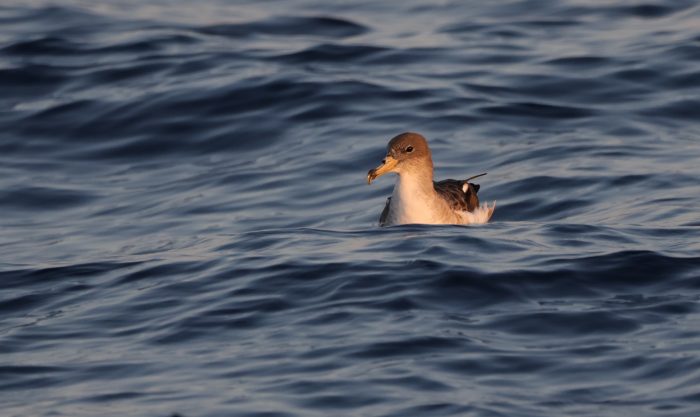
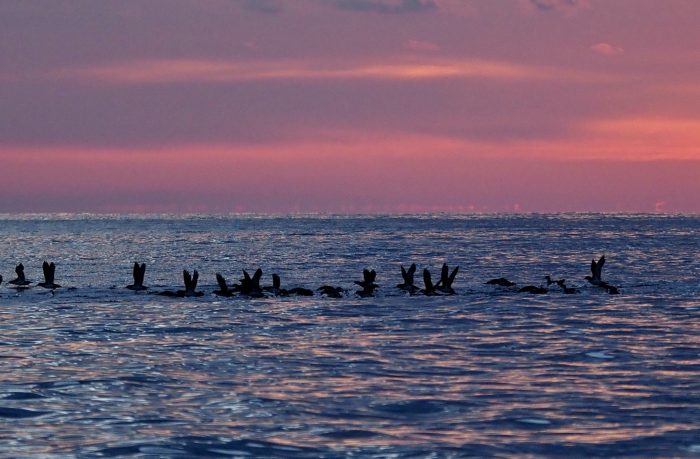
Helping Yelkouan Shearwater Fledglings
Between June and July, young Yelkouan Shearwaters — Garnija in Maltese — leave their cliffside nests for the first time, but many become disoriented by artificial lights and end up stranded on land. These fledglings can’t take off from flat ground and need our help to survive. If you encounter a grounded Yelkouan Shearwater, please follow these steps:
- Contact BirdLife Malta at 2134 7645 during office hours or 7925 5697 on evenings and weekends;
- Note the exact location where you found the bird as accurately as possible;
- Approach the bird from behind and gently pick it up using a clean cloth or towel, making sure to keep its wings folded against its body and support the head;
- Place the bird in a well-ventilated cardboard box;
- Keep the box in a cool, dark place;
- If possible, offer fresh water in a deep, stable container. Let the bird drink on its own without handling it further. Do not attempt to give water directly;
- Do not attempt to feed the bird.
Your assistance can make a life-saving difference for these vulnerable seabirds.
All rescued birds are cared for, ringed for research, and safely released at sea. By staying alert and acting quickly, you can help save one of Malta’s iconic seabirds.
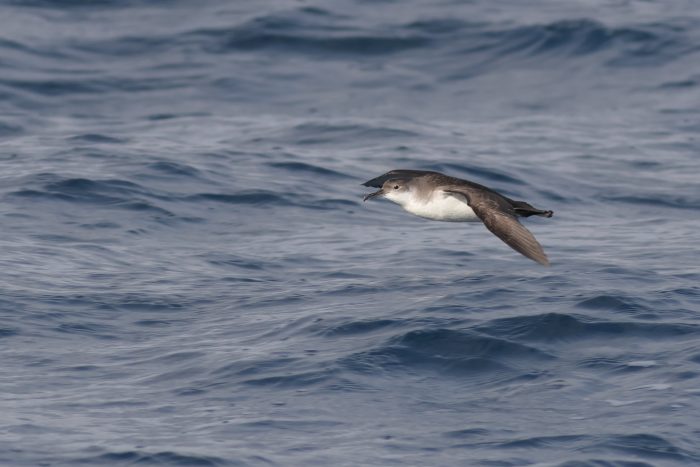
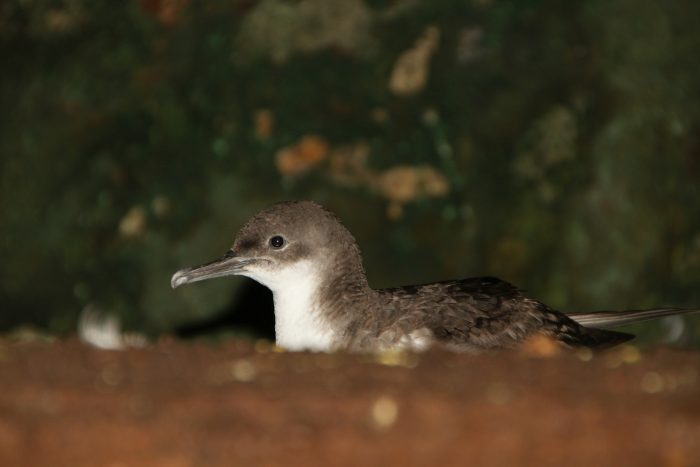
Offshore Wind Meeting
Our project manager Manya Russo attended a conference and training seminar in Edinburgh in June, revolving around wind energy development in Europe, and its implications on seabirds. Partners from 14 BirdLife offices met up to discuss common challenges and share knowledge, in order be prepared to support developers and governments to mitigate impacts on seabirds. The outcome of such discussion highlighted the need for more research, but also that different contexts will require different solutions. It will be important to find balance between increasing capacity of renewable energy worldwide and safeguarding species that cross our oceans.
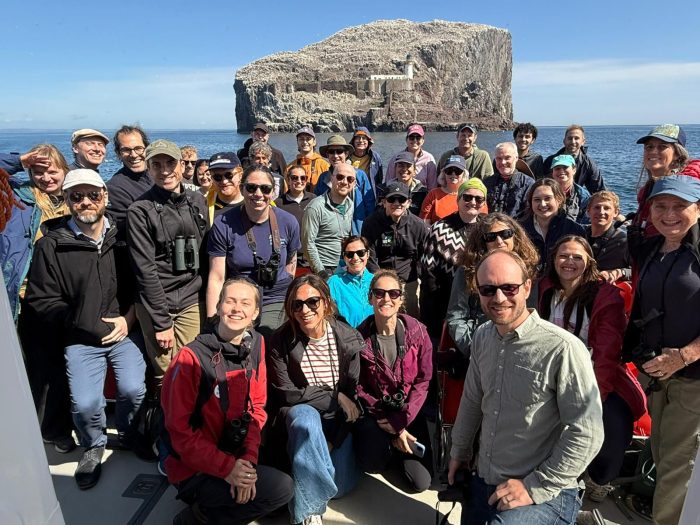
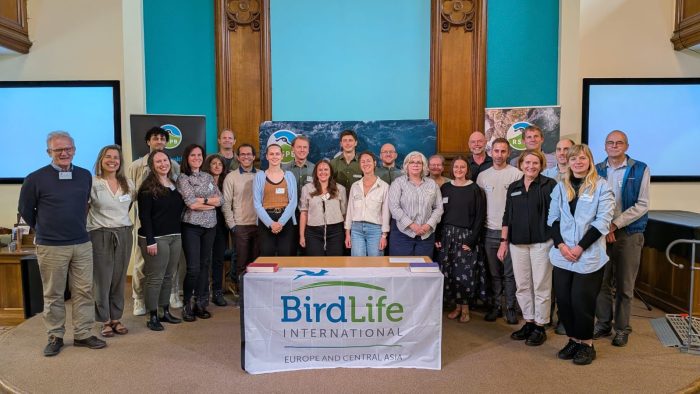
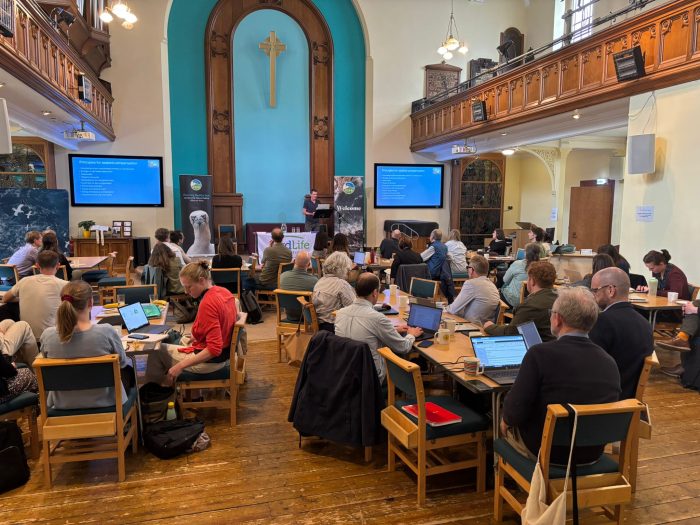
Dwejra Tower Event
Earlier this month, members of the public gathered at Dwejra Tower, Gozo, for a unique evening of nature and science. Against the stunning backdrop of sunset and a starry sky, attendees listened to the calls of Scopoli’s Shearwaters and explored the night sky through a telescope. The event featured insightful talks on seabird conservation and the impact of light pollution, offering a memorable experience in one of Malta’s Dark Sky Heritage Areas. The event was organised by BirdLife Malta as part of the LIFE Tetide project and supported by Din l-Art Ħelwa and professor Joseph Caruana.
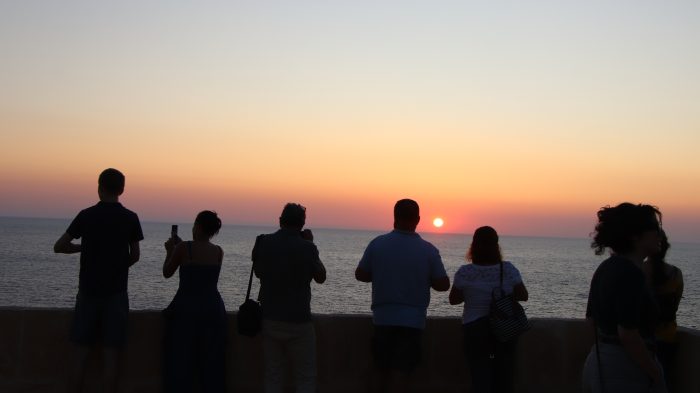
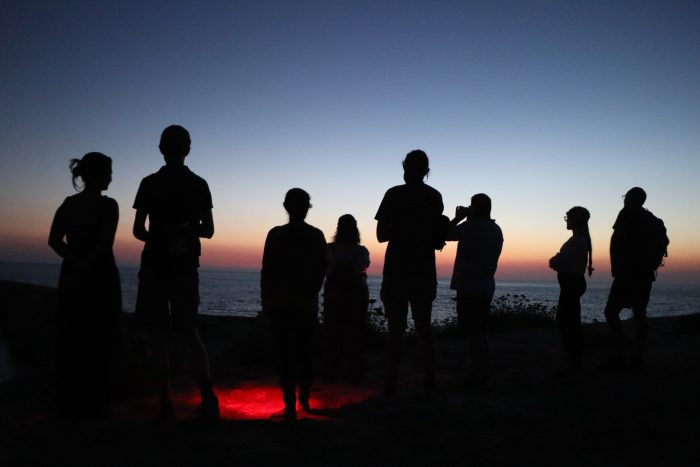
Follow our LIFE PanPuffinus! project on our website and social media!

BirdLife Malta Feedback on the Public Consultation for the Partial Local Plan Review of Villa Rosa Site, Paceville
BirdLife Malta submitted feedback on the proposed Partial Local Plan Review for the Villa Rosa site in St George’s Bay. The proposed policy change would allow buildings of up to 39 storeys — far exceeding the current six to seven storey limit — threatening the last remaining urban green spaces in the area.
The increase in height lacks credible justification or impact assessments, contradicting environmental objectives outlined in the policy review itself. It also conflicts with the EU Nature Restoration Law, enacted in August 2024, which requires Malta to prevent any net loss of urban green space and tree canopy cover compared to 2024 levels.
Claims of expanded public open space are also misleading, as these areas would be overshadowed by high-rise towers. The development would also intensify existing issues such as traffic, overdevelopment, and environmental degradation.
In light of these concerns, BirdLife Malta urged the Planning Authority to reject the plan. Instead, this valuable green space in St. Julian’s should be protected and restored for the benefit of residents, visitors, wildlife, and future generations.
BirdLife Malta Objects to Development Near Salina Nature Reserve
BirdLife Malta objected to application PA/02900/25, which proposes 65 apartments, 9 maisonettes, and 74 garages across three basement levels.
This application is particularly concerning due to the concurrent submission of two adjacent applications — PA/01396/25 and PA/01397/25 — which together raise serious concerns about cumulative environmental and social impacts. Despite being filed under different names, all three applications were submitted by the same architect, strongly suggesting a single developer may be attempting to fragment the project to avoid full environmental scrutiny.
The proposed development lies just 50-70 metres from three protected areas, including the Is-Salini Site of Community Importance and a declared Bird Sanctuary. These areas support protected wildlife, including nesting and resting birds that are sensitive to noise, light pollution, and habitat disturbance.
The project also exceeds the five-storey height limit set by the North West Local Plan, further undermining local planning policy.
BirdLife Malta urged the Planning Authority to assess the three applications collectively and reject PA/02900/25 to protect the ecological integrity of the Salina Nature Reserve.

Salina Nature Reserve
Sightings
This month brought plenty of excitement and eagerly expected moments for all birdwatching enthusiasts in Malta. The first Greater Flamingo of the season made Salina Nature Reserve its temporary home, drawing in numerous visitors and photographers to admire its elegance. During its 10-days stay at Salina, it enjoyed the abundance of food and the tranquillity of the outer saltpans, together with Little Egrets. Besides everyone’s favourite pink model from Salina’s logo, the reserve was also visited by common bird species such as the Little Ringed Plovers, Squacco Herons and of course, different kinds of Gulls.
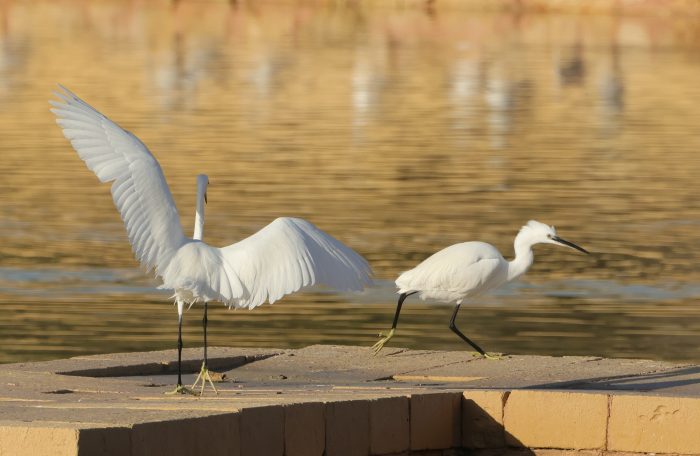
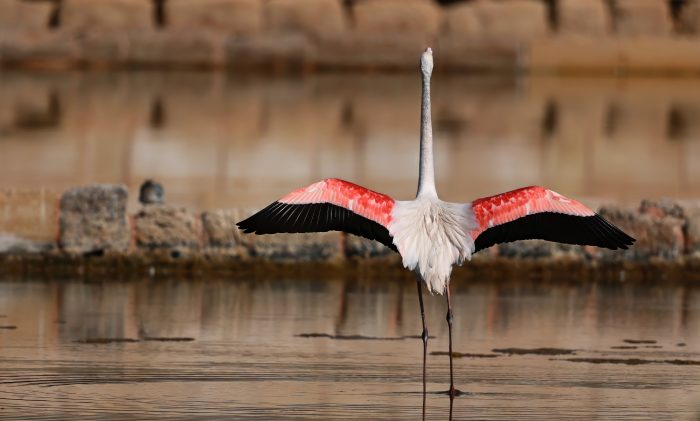
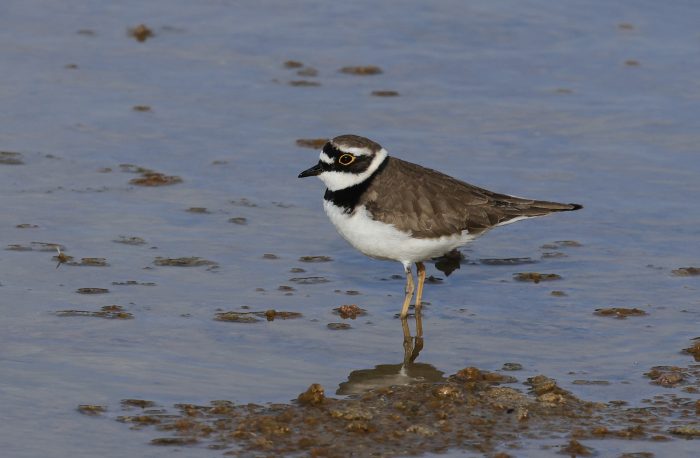
Works
While the saltpans were left undisturbed for long-haul flights visitors to get their much needed rest and refreshments, the walking paths along the saltpans began undergoing their transformation. Works began on new handrailing along the paths, as well as on the terrace of the visitor centre. Important works are also being undertaken in replanting the wetland area and the Dinja Waħda garden. This years’ seeds are being collected for next spring, and already developed saplings are being carefully planted, ensuring the conservation of local flora and fauna.
Three volunteer activities were organised to remove invasive alien plants from the wetland area. Whilst everyone had fun, this was also really useful to control the highly invasive South American Fleabane, that can displace local species.
Together with the regularly organized tours and private events at Salina, final preparations for the salt harvest are also in full swing. The last of the brine water is being transferred to the crystallization pan near the visitor centre, while making sure the birds are left undisturbed. With the help of the hot summer sunlight, the first salt crystals already began forming, boosting our confidence in a successful salt harvest this summer. And for all interested in this years’ harvest, make sure to join us at the Salina Salt Festival on July 26th and 27th! It is going to be a weekend dedicated to the history of salt in Malta, with lots of fun activities for youngsters, interesting workshops, handcrafts, and tasty treats. So, make sure to bring your loved ones and join in on the fun!
Għadira Nature Reserve
Sightings
Breeding birds at Għadira were the highlights of the month as Black-winged Stilts hatched four chicks, three of which survived throughout the month and are now about to fledge. Four pairs of Little Ringed Plovers nested as well, however the high salinity, combined with other factors, resulted in a very low chick survival rate.
Other species — including some Squacco Herons and up to ten Little Egrets — were seen almost daily. A Grey Heron was recorded at the reserve on June 29th. A small number of European Honey-buzzards were spotted at the beginning of the month, as well as a couple of Common Reed-warblers. Green Sandpipers and Common Sandpipers were frequently recorded by mid-June and a Common Greenshank and Common Redshanks were also noted on a couple of dates.
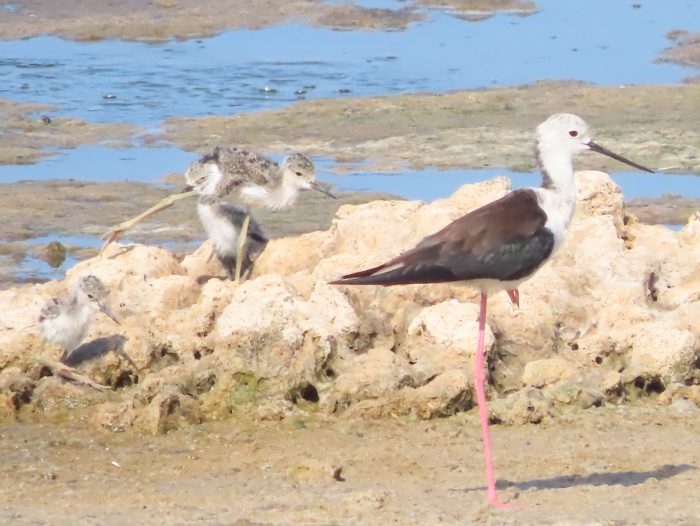
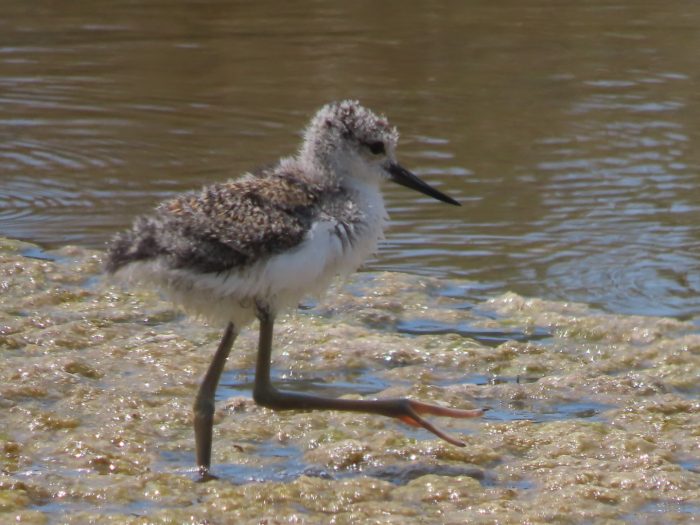
Works
Our team started working on a project aimed at the removal of invasive alien plant species in the buffer zone that separates Marfa road from the east side of the reserve. A large number of Giant reeds (Arundo donax) were removed with the help of our ESC volunteers, who cleared the area and removed the tipping that got stuck in the vegetation and accumulated during the past months.
We carried out the removal of the invasive African boxthorn in a small sand dune area on the South East side of the reserve. We got rid of 15 large shrubs, carefully removing their roots, in order to prevent the regeneration of the plants.
Around 50 Lentisk shrubs (Pistacia lentiscus) were planted on the east side of the rehab centre. With the installation of a drip irrigation system, the shrubs are currently being watered up to three times per week, to quickly establish a good root system and create a vegetation buffer around the rehab aviaries.
Currently a weekly survey for the monitoring of the Burrowing Sand Crickets is under way. ESC volunteers are helping out in the survey to mark active cricket burrows and keep track of their population within the sand dune area of the reserve. Burrowing Sand Crickets are unique to the Western Mediterranean basin and are protected under European environmental legislation.
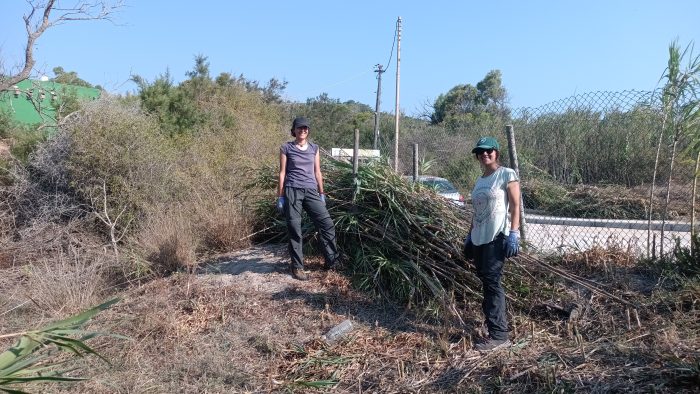
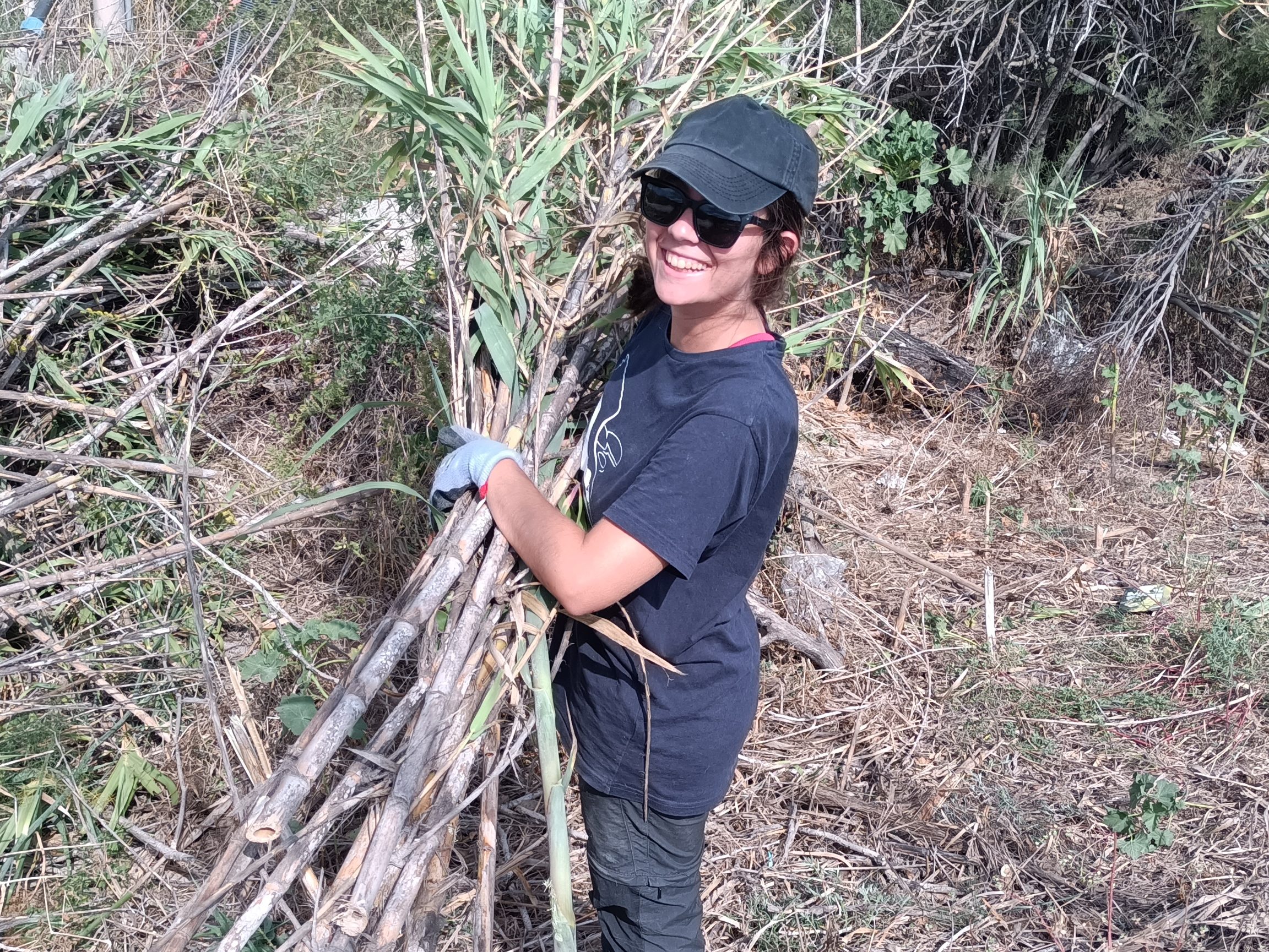
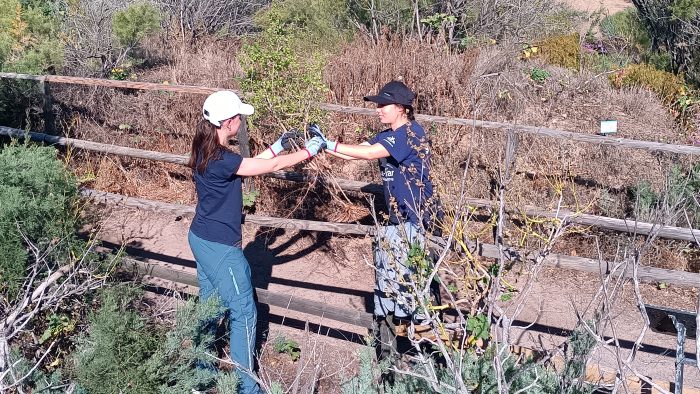
Simar Nature Reserve
Sightings
With the summer heat well under way, most of the annual plants within the wetland have dried out. But these are gradually being replaced by the much rarer halophytic plants. These plants flourish during summer when the water levels are low and salinity increases. Such plants include Twiggy Glassworts, Mediterranean Bindweed and Smooth-leaved Saltwort. Together with more common and widespread vegetation — such as Tamarix trees, Common Reed and Golden Samphire — these plants bloom during the summer months thus enhancing the aesthetic look of the reserve.
The first waders started to arrive on their way to Africa. These included Common Sandpipers, Green Sandpipers and Little Ringed Plovers. A few Black-crowned Night-herons have been seen regularly, seemingly settling down for the summer months. Various Common Moorhens chicks were present, with some already full grown. The presence of Common Reed-warblers singing throughout the month indicates nesting in the thickest part of the reedbed.
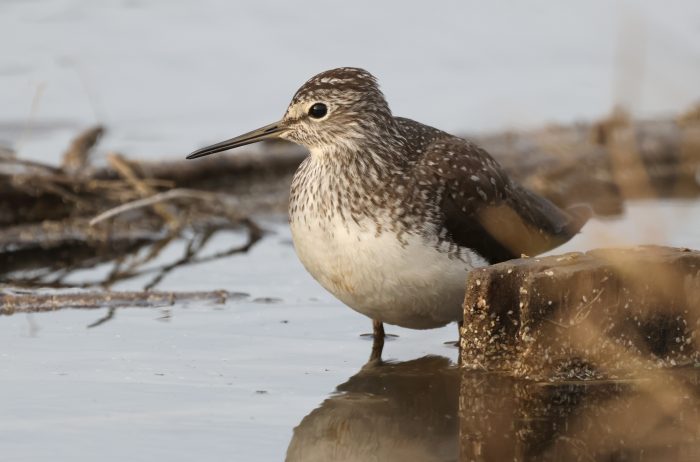
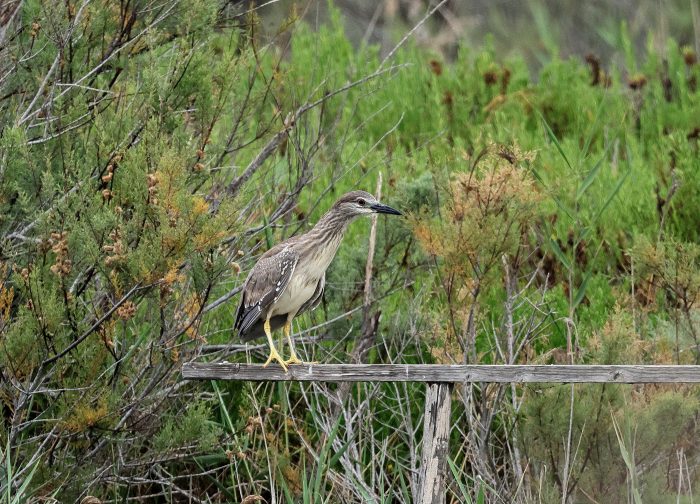
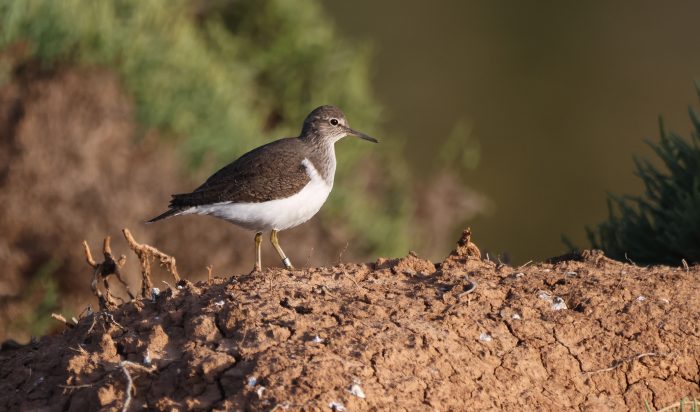
Work
In this time of the year we mostly focus on habitat works, especially in the wetland. The annual clearing of reeds is essential to keep certain areas of the wetland exposed. These serve mainly as feeding areas for several bird species, but they’re also important to minimise competition in interspecific plant species.
The island closest to the visitor centre is having some habitat changes, thus helping the biodiversity of the island. The Golden Samphire — the dominant plant on the island — has been removed from specific areas to make space for more diverse plant communities such as Salsola soda and Cressa cretica. Also some Tamarix trees were removed from the shoreline and at the same time some soil was also removed to lower the ground and create mudflats. Canals within this area are also being dug to allow water to flow within the island during winter. Works will be carried out in the following weeks, with more improvements coming in the next years.
The path leading to the visitor centre is going through some changes as well and it will pass through the Tamarisk trees. We’re also working on landscaping of the area, to provide a better walking experience. Other works included levelling of ground, trimming of trees, shredding of branches and planting of native plants. We will keep on going during the following months!
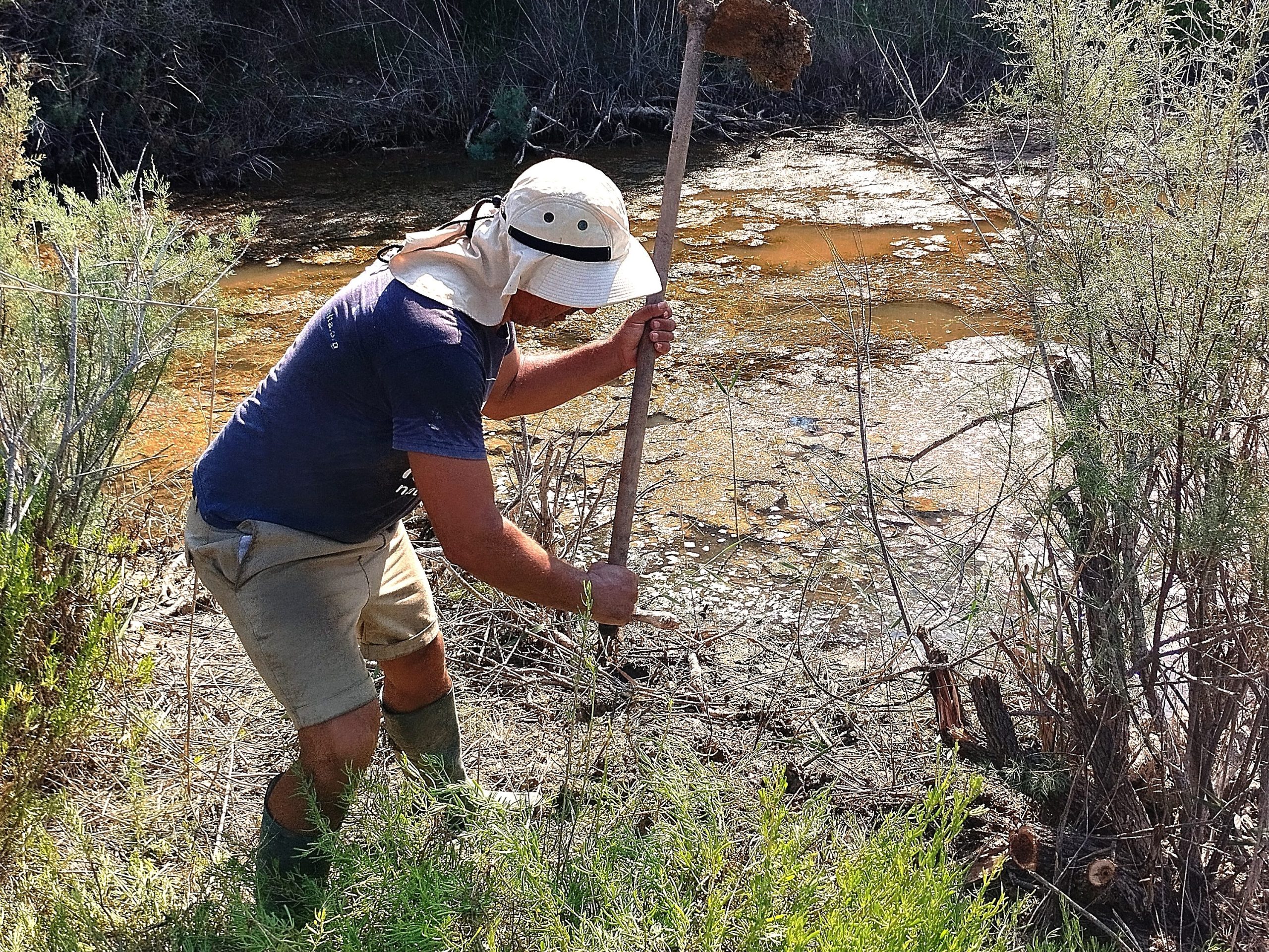
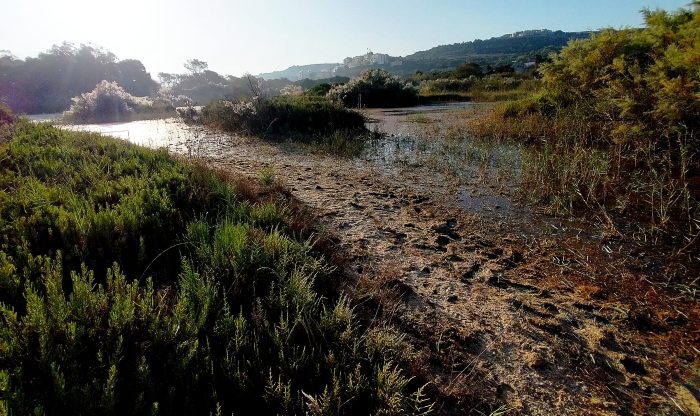
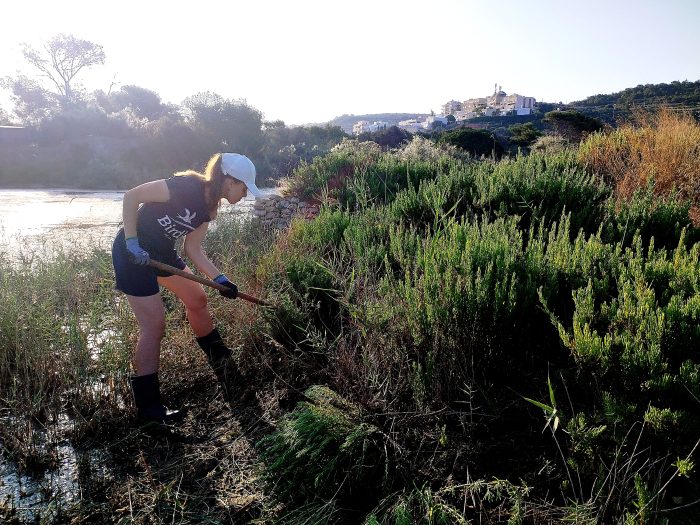
Foresta 2000
Sightings
This month, our visitors can witness the dry land cover of the Mediterranean forest and smell the strong scents of Mediterranean thyme and mustard flowers. Chaste trees are also in bloom in the steppe valley, providing excellent foraging opportunities for bees. Carob tree fruits have started turning brown, releasing a beautiful chocolatey smell, and the Wolfbane (Siġra tal-Ħarir in Maltese) has begun producing its silky seeds.
Butterflies are abundant, with a variety of species including the Maltese Swallowtail, Common Blue, Large White, Painted Lady, and the bright yellow Cleopatra butterfly. Additionally, different dragonflies — such as the Long Skimmer and Scarlet Darter — are plentiful in the garrigue areas. Plenty of small lizards and chameleons can also be found hiding in the dense vegetation, adding to the diverse wildlife of the area.
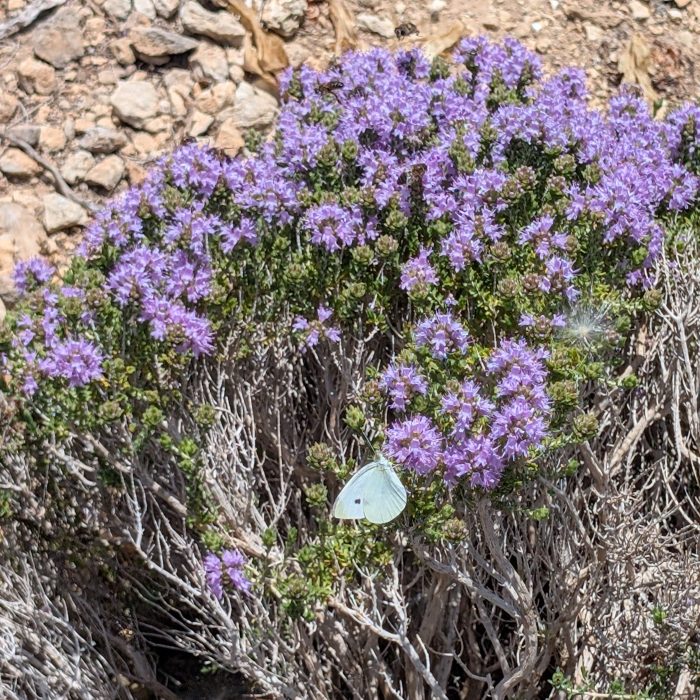
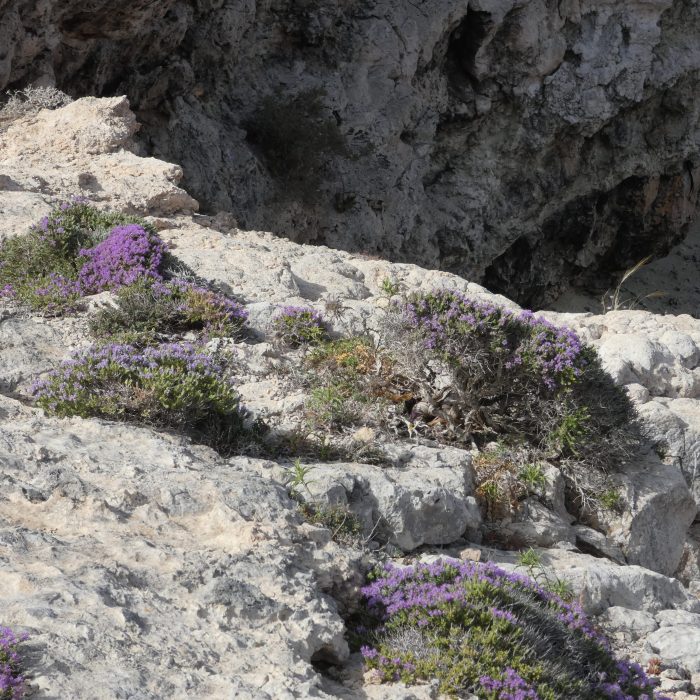
Early in the month, visitors were treated to sights of Spotted Flycatchers and to the striking golden flash of a Golden Oriole in flight. As always, summer doesn’t bring many bird sightings. However, loud breeding birds — such as Spanish Sparrows, Eurasian Tree Sparrows, Sardinian Warblers, and Zitting Cisticolas — are always around. Plenty of Eurasian Collared-doves can be seen gliding overhead. During the morning and evening hours, one can enjoy the flight of Common Swifts. Young Blue Rock-thrushes also started flying above the cliffs area after hatching.
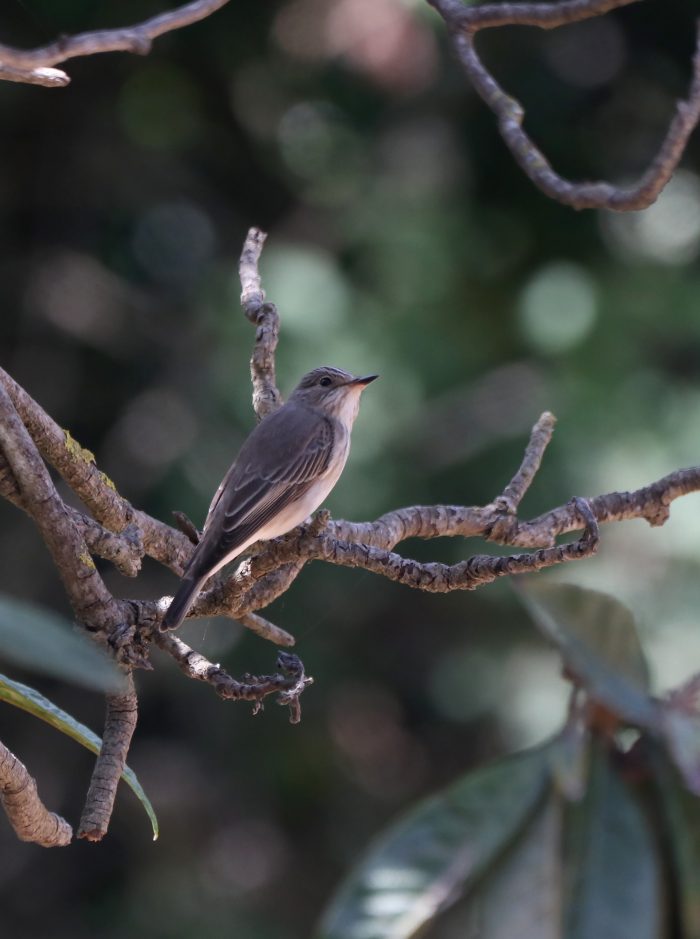
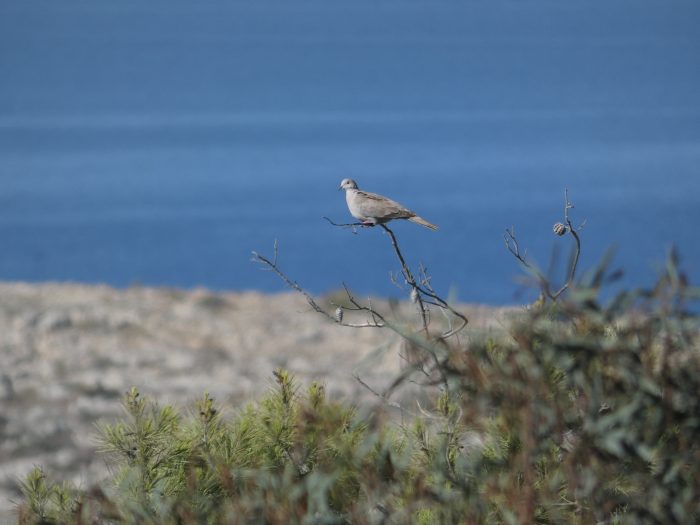
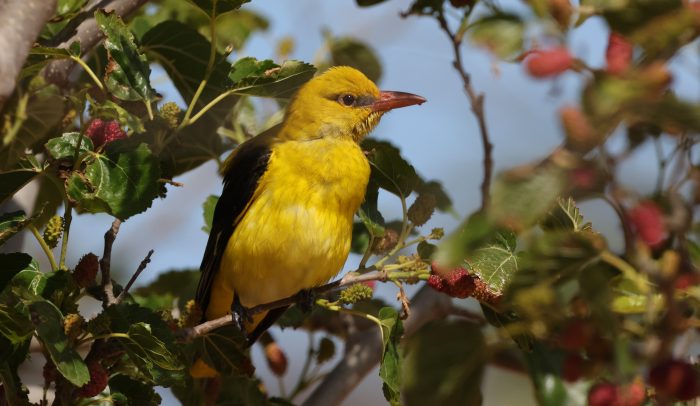
Works
Throughout the month, regular weekly clean-ups were conducted, along with some minor repairs to benches in picnic areas and the removal of unstable railings. Ambjent Malta continued to carry out maintenance work and marking of hiking tracks. New signage and updated trail markers are also being installed to improve visitor navigation and enhance the experience for all who explore Foresta 2000.
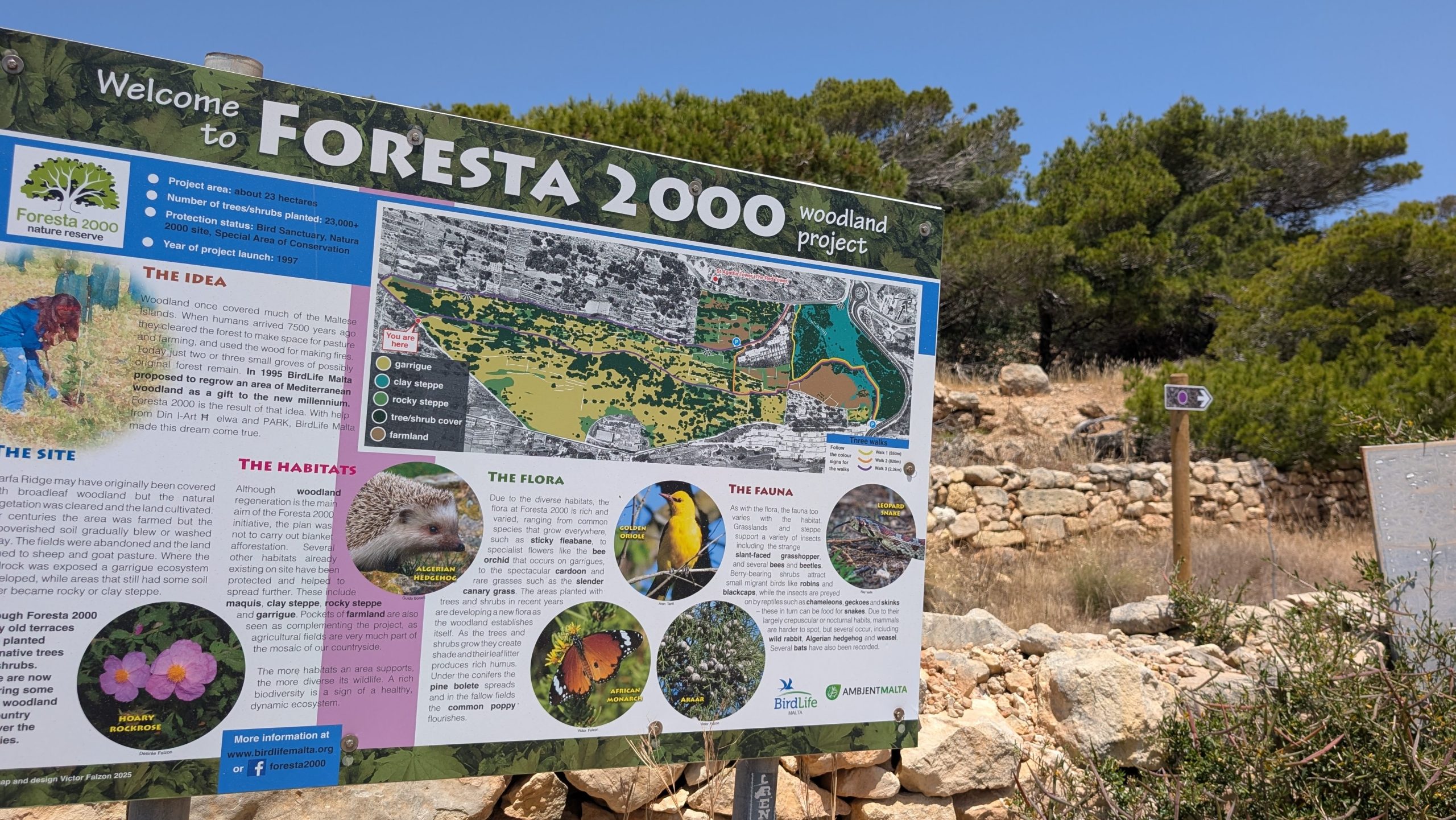

A Rare Beauty Lands at Salina — Flamingo Steals the Show!
Greater Flamingos are irregular visitors to Malta. They are mostly seen flying along the coast or far out at sea, with most observations occurring during August and September, when Flamingos can be seen migrating in small to large flocks. During this period, it is not uncommon to see exhausted young birds that become separated from the flock and stop at coastal spots to rest and feed.
So spotting one inland at a nature reserve is a rare treat! One of the most notable recent sightings was at Salina Nature Reserve, where a stunning adult Greater Flamingo made an appearance and called the salt pans home for over a week, captivating birdwatchers and nature lovers alike. On most days, it could be observed feeding, resting, and occasionally taking short flights — probably to flex its muscles.
At Salina Nature Reserve, single adult flamingos are sporadically observed outside their usual migration period. This phenomenon is difficult to explain, but possible reasons include injury, exhaustion, or individuals becoming separated from flocks, especially during unfavourable weather conditions. Naturally, since Salina offers favourable conditions such as stable water levels, abundant food, and relative safety, it is an ideal resting place for these individuals.
If you are lucky enough to spot one, it’s a moment worth savouring — not just for its beauty, but for the incredible journey it has undertaken to get here.
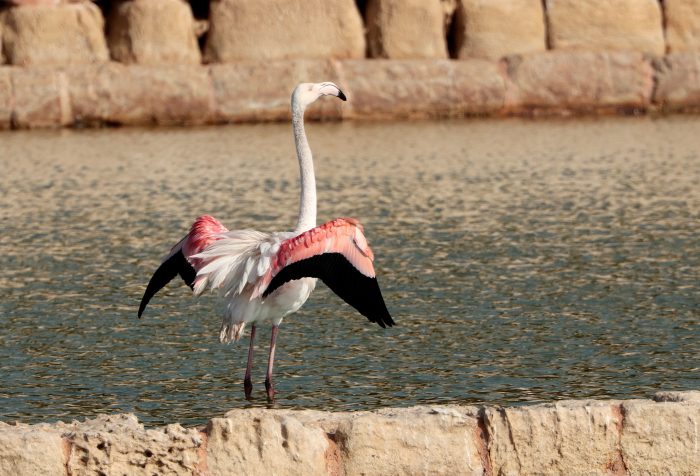
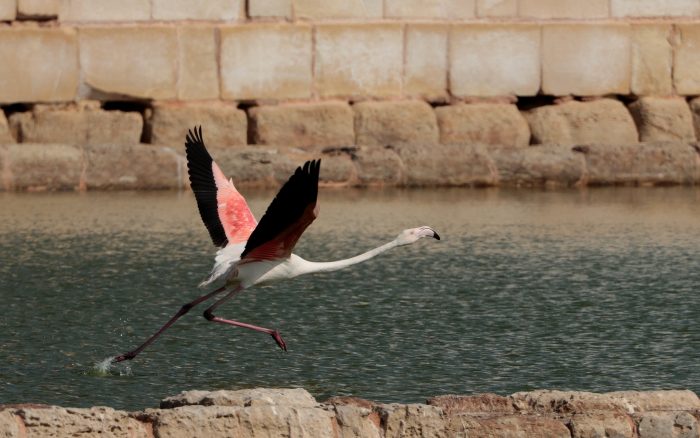

Earth Garden 2025: A Big Thank You!
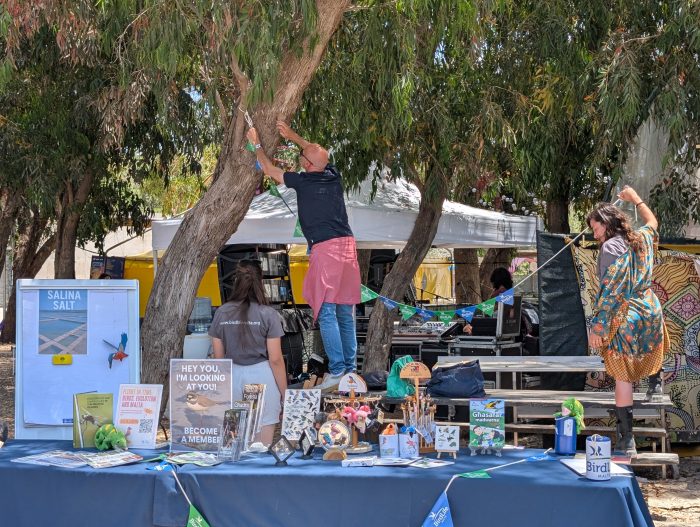
A huge thanks to everyone who stopped by BirdLife Malta’s stand during Earth Garden — especially to those who became our members and supporters! It was amazing to see so many people eager to learn about our local nature and birds. From curious kids to passionate adults, your enthusiasm for wildlife reminds us why conservation matters.
Flying Back in Time in Salina Nature Reserve
From dinosaurs to birds — we time-traveled with the amazing Jop van Dijen, who is actually studying bird fossils that were excavated in Malta. With his expertise, we also had the opportunity to identify the bones of different wonderful birds!
Click here to have a look at what we did!
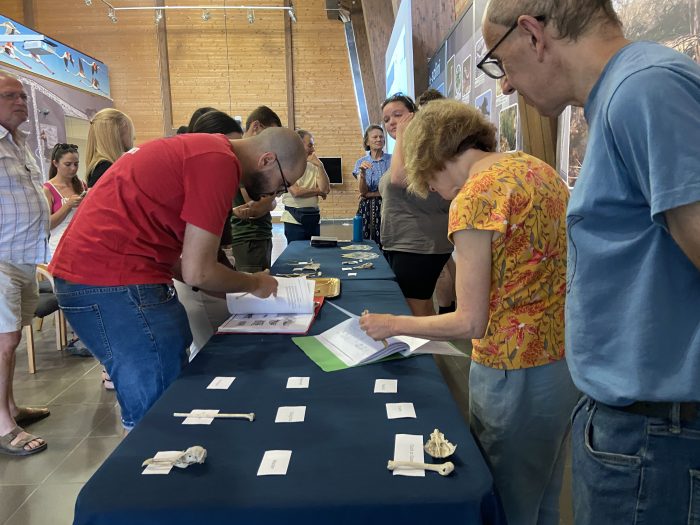
An Exciting Night Under the Moon
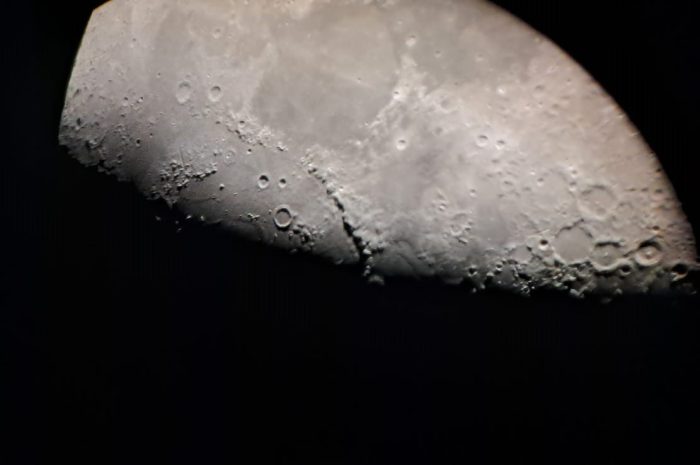
On July 3rd, FALKO Youth Group joined forces with the Astronomical Society of Malta and the Light Pollution Awareness Group for an awe-inspiring night at Miġra l-Ferħa! We explored the moon and stars, learned how light pollution affects our skies and wildlife, and got a rare close-up look at the mysterious Scopoli’s Shearwaters. Truly a night to remember!
Volunteers to Change the World!
On June 20th, all BirdLife Malta’s volunteers gathered to celebrate our amazing community and the shared values that keeps us together, to achieve our shared goals. It is thanks to each and everyone of them if we’re able to accomplish as much things as we do.
If you haven’t done it already, come join us and be part of the change!
Click here to know more about our volunteering opportunities.
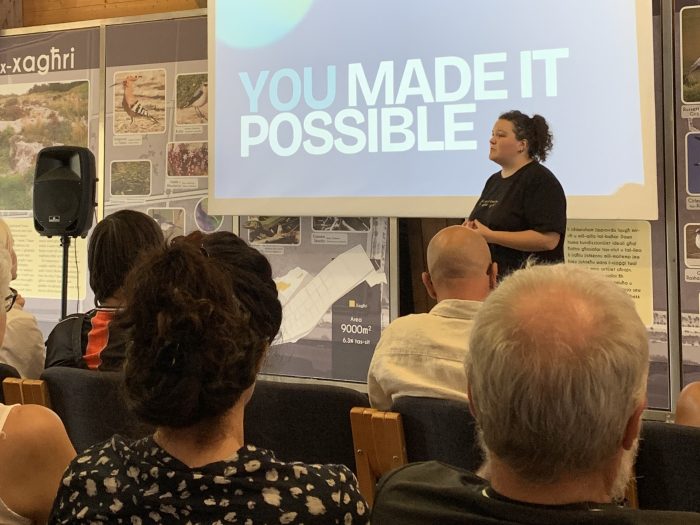
Smallest Wonders, Biggest Discoveries: Nature Learning with Dinja Waħda
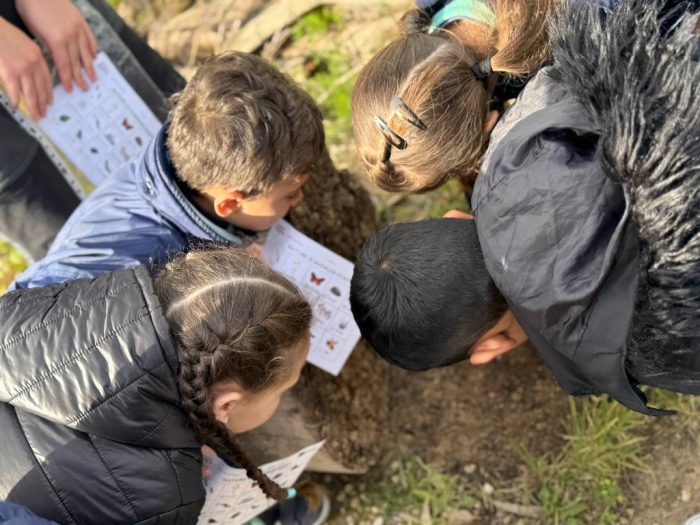
Another successful year of Dinja Waħda has come to an end, with more than 60 participating schools. All the positive feedback received from teachers on how excited kids get about the activities proposed — both indoors and outdoor — encourages us for another great year, packed with nature, fun and curiosity to learn more about the world around us!
Credits
Text: David Attard, Charles Coleiro, Mario V. Gauci, Marcella Giornetti, Giada Lampitelli, Filip Martinic, Manya Russo, Nadia Sodano, Vera Tokmakova, Davide Tomasi, Martha Walter
Photographs: Tamar Antia, Ian Balzan, Rachele Bassi, Charles Coleiro, Mario V. Gauci, Benjamin Metzger, Manya Russo, Aaron Tanti, Nadia Sodano, Alishia Stone, Vera Tokmakova, BirdLife International
Editing: Nadia Sodano

